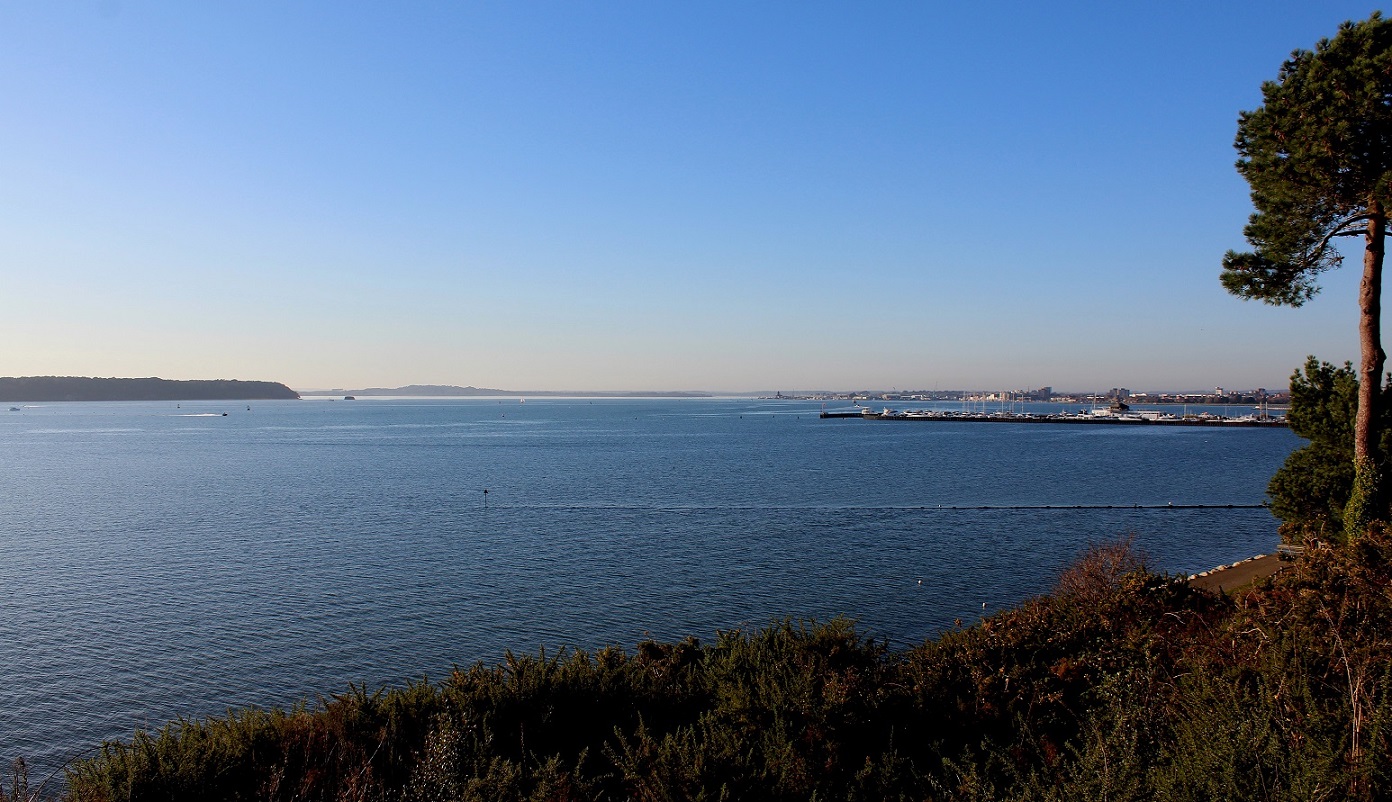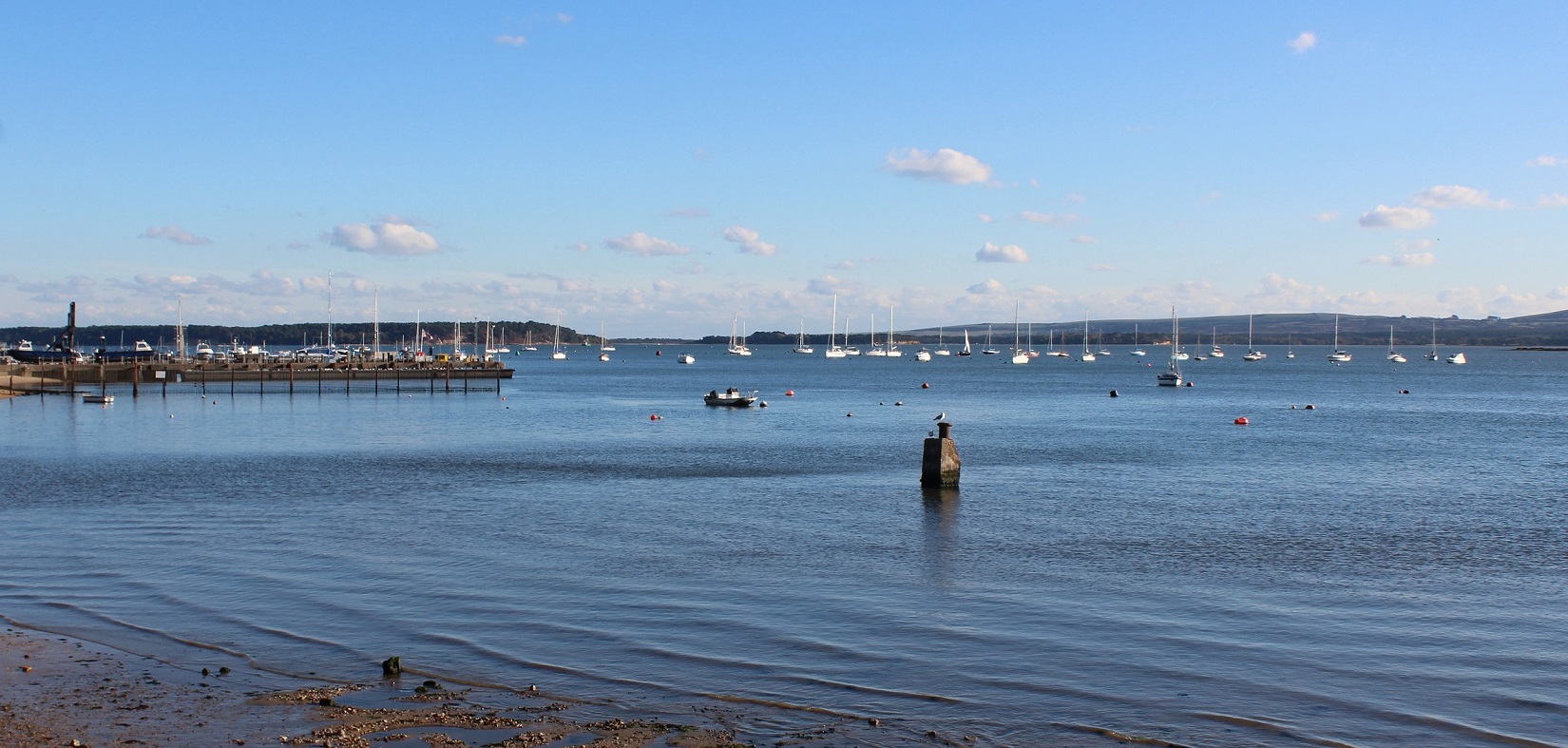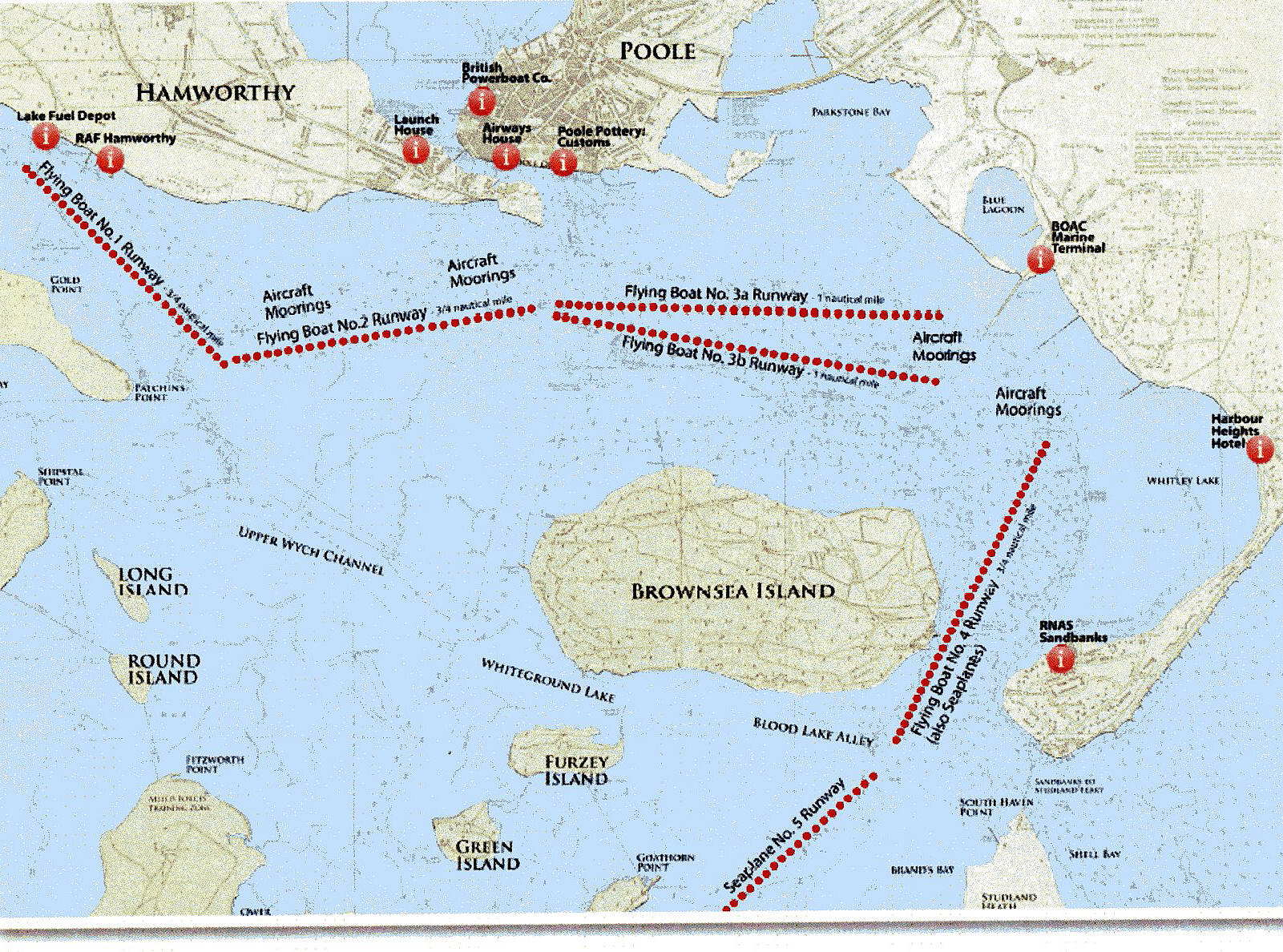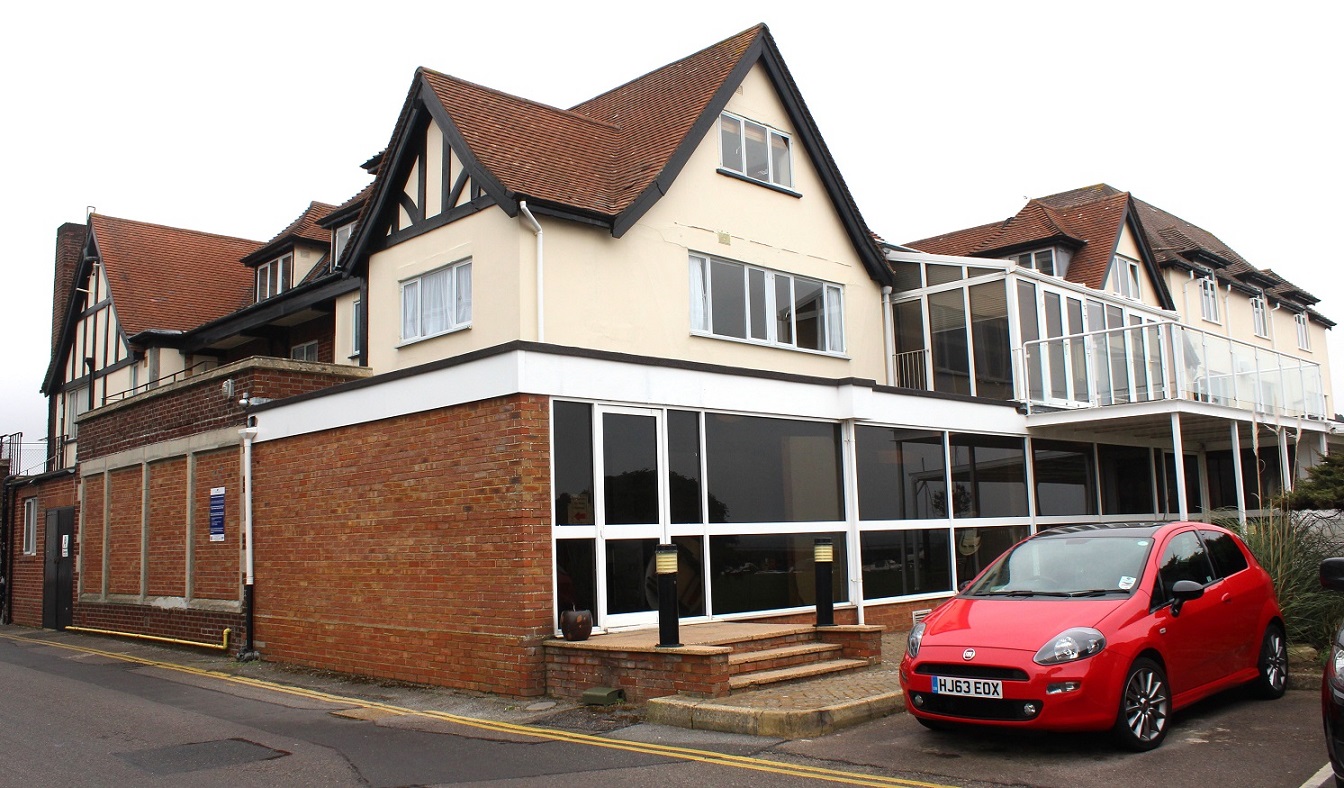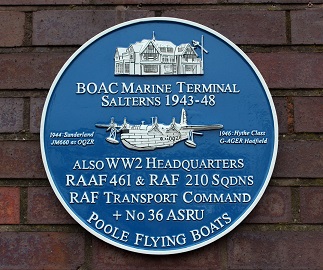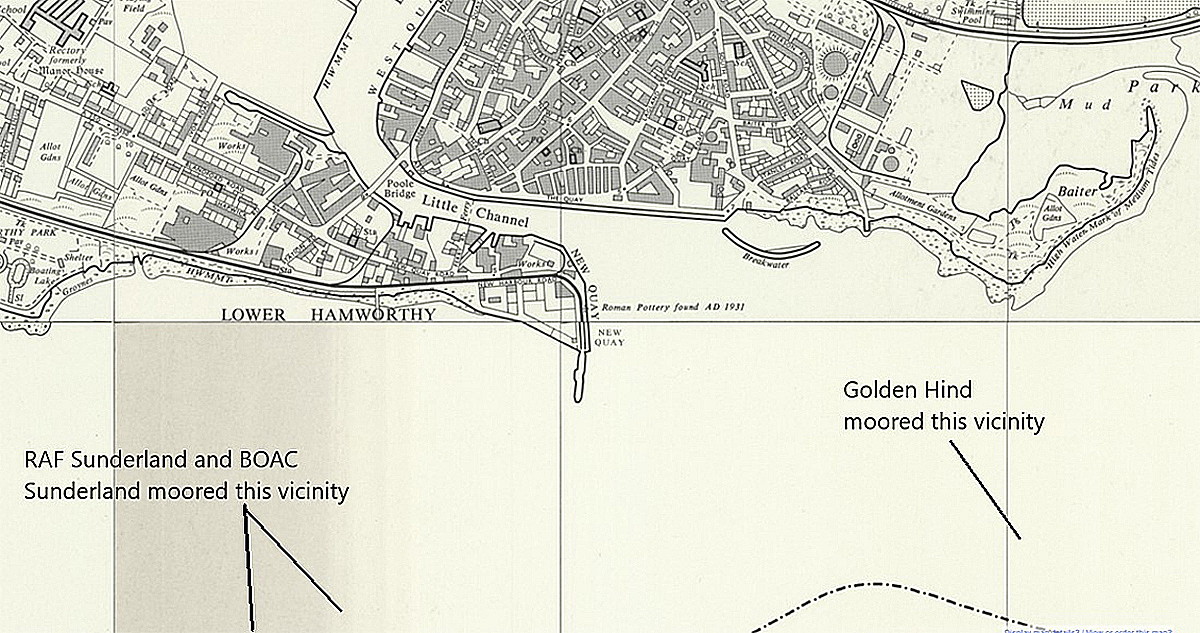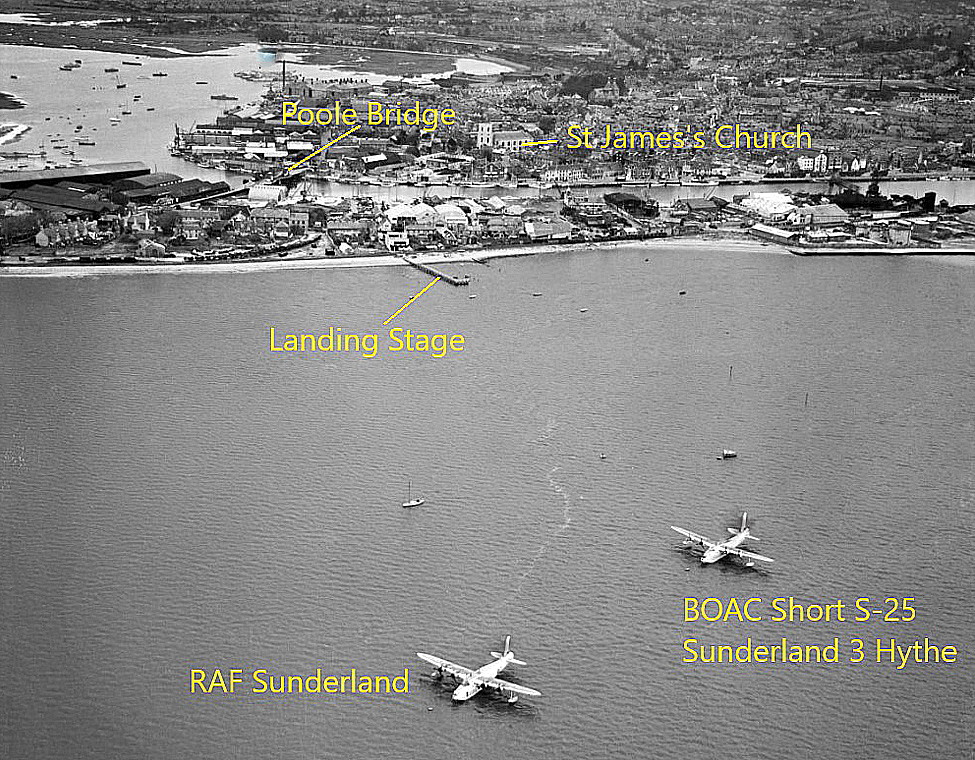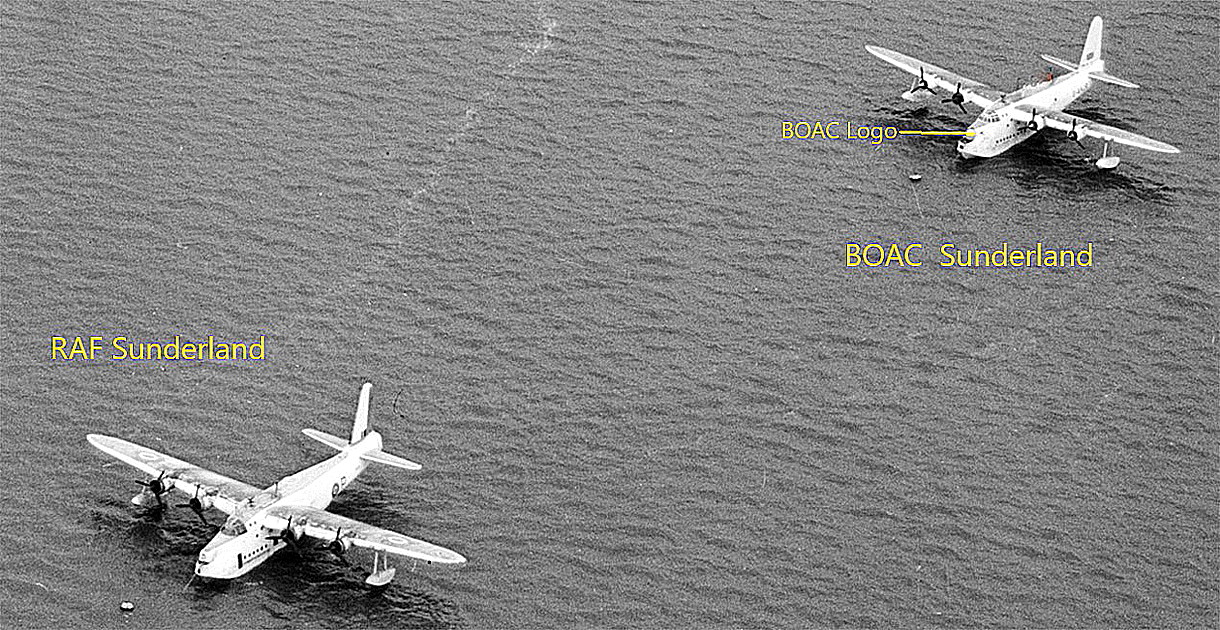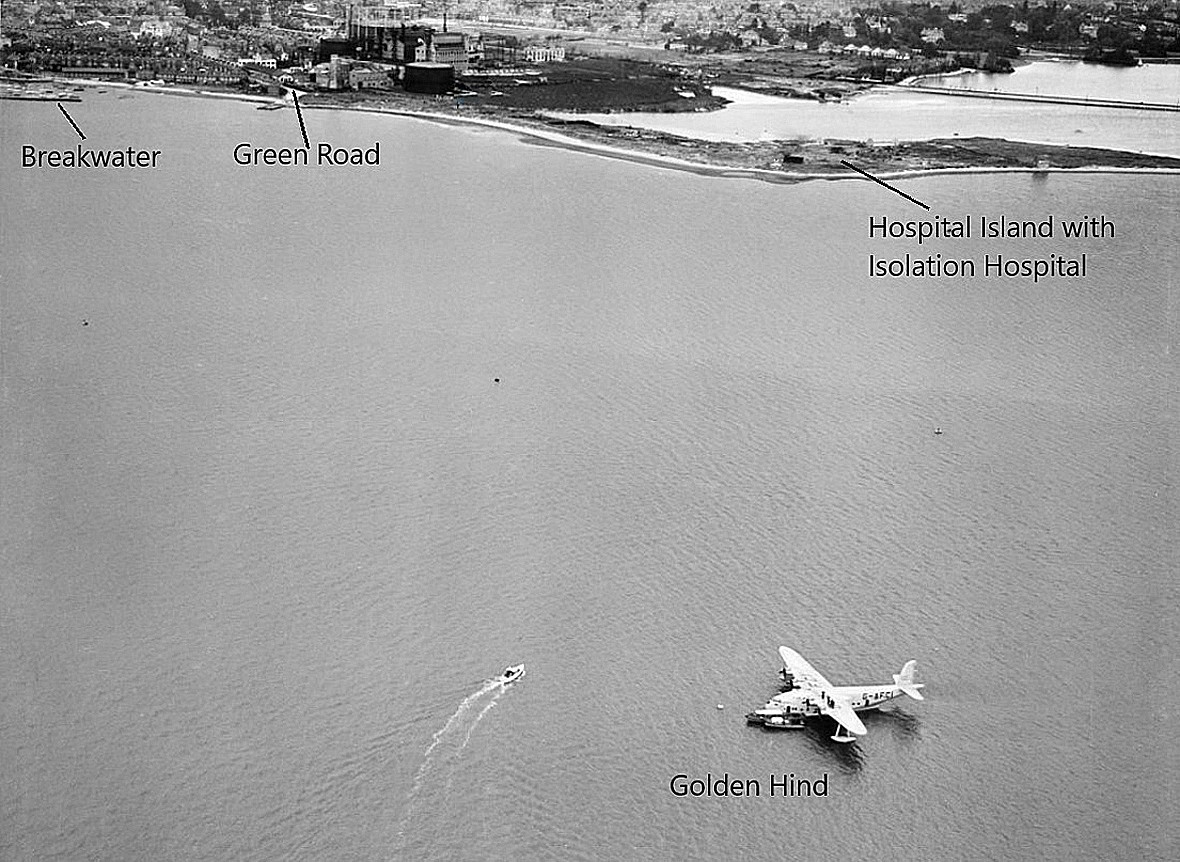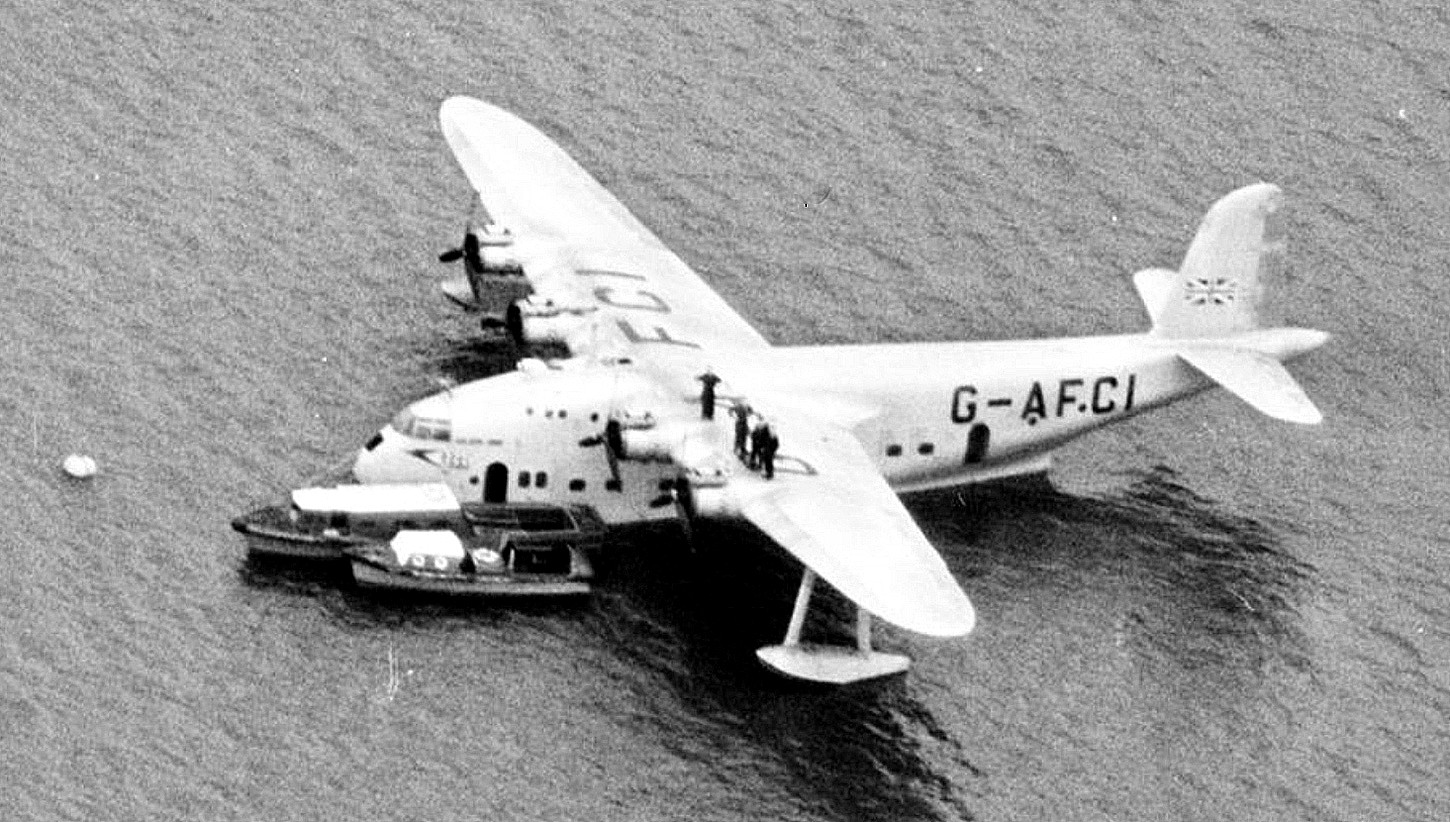Poole Harbour
Note: This map only shows the position of Poole Harbour within the UK.
POOLE HARBOUR: One civil and one military flying boat base in WW2, later civil flying boat base
(Known also as RAF POOLE for about one week it seems in 1942 before being renamed RAF HAMWORTHY)
Note: First picture by the author in January 2017, the second in October 2018.
Operated by: Civil; BOAC
Military: RAF Transport Command
RAAF [Royal Australian Air Force] 461 Sqdn (Short Sunderlands)
RAF 210 Sqdn (Short Sunderlands)
Locations: Near/in Hamworthy for RAF, and Lilliput, BOAC Marine Terminal Salterns for BOAC
Period of operation: For use by flying boats from the 1930’s to 1947/48, then very occasionally up to 1976? The Salterns site was operational from 1943 to 1948.
The map is courtesy of the Poole Flying Boats Celebration web-site.
Landing areas: In WW2 water runways were known as ‘Trots’ (possibly before?). See map
NOTES: A seaplane Alighting Area is shown on Admiralty chart 2175 in the 1930s. A display in Poole Museum states that Imperial/BOAC moved operations to POOLE HARBOUR in 1940 and established a base and terminal there employing 600 people. Even so it appears BOAC still positioned their ‘boats’ back to HYTHE in Southampton Water for ‘heavy’ maintenance. After WW2 the British still clung onto the idea that flying boats still had serious future and indeed Saunders-Roe built the huge Princess flying boats - three I think? I’m pretty certain I saw the fuselages (at least - possibly with the wings attached?) cacooned in Cowes as a lad on a summer holiday to the Isle of Wight. It is reported that BOAC retained flying boat operations from the harbour until 1948.
As well as still operating the Shorts ‘C’ Class Empire Flying Boats BOAC also operated the larger Boeing B314 types - possibly only from POOLE HARBOUR? In flying boat terms these were the ‘Jumbo Jets’ of that time. They had a range of 5200 miles and therefore could cross the Atlantic in ‘one hit’. It appears Winston Churchill first flew to the USA in one and the type was reserved in WW2(?) by BOAC for trans-Atlantic operations? Only twelve were built, the “ultimate in luxury and performance” and during the early years of WW2 the British Purchasing Commission acquired three for operation, (ordered originally by ‘Pan Am’), by BOAC. G-AGBZ (NC 18607) ‘Bristol’, G-AGCA (NC 18608) ‘Berwick’ and G-AGCB (NC 18610) ‘Bangor’.
It appears PAA, (Pan American Airways), operated the Sikorsky ‘Clipper’ S.42 type into POOLE HARBOUR and BOAC ‘handled’ their operations. One report suggests the ‘Pan Am’ flights routed via Foynes near Shannon in the Irish Republic. A country which although declaring itself neutral in WW2 was somewhat friendly to Nazi Germany, (as was Portugal, Switzerland and Sweden of course).
In a first hand recorded report from a BOAC pilot in Poole Museum he says that during the run-up to the D-Day invasion in WW2 they diverted to drop off and pick up passengers in PEMBROKE harbour, South Wales, then flew the ‘boats’ across to POOLE or HYTHE for ‘fettling’ and maintenance. The reason being the ‘powers that be’ didn’t want passengers to see anything of the D-Day invasion preparations.
In the Poole museum information states the RAF, at RAF HAMWORTHY, were also based at Lilliput, but it now appears that their HQ shared the BOAC Marine Terminal building. It seems to me quite possible that Winston Churchill might have departed from POOLE to attend the Yalta Conference? The outcome of which became one of the most disgraceful episodes in British history and placing us alongside the Nazi genocidal regime and Stalin’s similar ‘Progroms’.
If you ‘Google’ BOAC Marine Terminal or Flying boats in Poole harbour you will discover a lot more information, especially if you go to the Poole Flying Boats Celebration site. Much of the BOAC Marine Terminal building still exits and is encased in the Salterns Harbourside Hotel.
PARACHUTING MISADVENTURES IN WW2
I have come across a couple of accounts in this respect. One was from a then young lad who saw a fighter trailing a pilot whose parachute, presumably deployed far too soon in a panic when exiting his aircraft, had snagged around the tailplane. It appears it then crashed in Poole Harbour.
There is another account in the run-up to D-Day, during rehearsals for the invasion, of parachutists suffering a hang-up from C-47s operating in this area who were dragged at low level across the harbour whilst the crew tried to cut them free. I suppose the intention was that they could then be picked up, or swim to safety.
I wonder if any of these hapless parachutists survived? Hitting the water, even at the speed of a slow flying C-47, is akin to hitting concrete.
AND FINALLY
Mike Holder, a great friend of this 'Guide', discovered these photos in 2023 and has kindly provided the maps to show the mooring positions.
The BOAC terminal at LILLIPUT was operating up until 1948. Note the two tenders employed for embarking and disembarking passengers.
NOTES
The photo of G-AFCI is of special interest as this is the only Short S.26 'G' Class flying boat built by Shorts. It was first registered on the 21st July 1939 and operated by Imperial Airways, I think then named "Golden Hind"? It was impressed into military service as X8275 on 02.07.40 but restored to the civil register 06.12.41.
It was then operated by BOAC (British Overseas Airways Corporation) with their headquarters in Bristol, and the base station was given as HYTHE in HAMPSHIRE. BOAC certainly named it "Golden Hind". They had it registered to them from 06.12.41 until 18.11.47 and I bet it could have told many a tale. Who knows how far afield it might have flown? It was sold to a couple of other owners in the U.K. and it seems, sadly, was destroyed in a gale during March 1954 when moored in the River Swale on the Isle of Sheppey in KENT.
We'd love to hear from you, so please scroll down to leave a comment!
Leave a comment ...
Copyright (c) UK Airfield Guide















